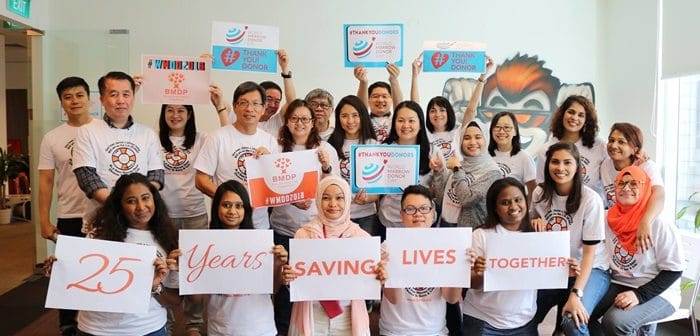Leukaemia is a word no parent wants to hear in the same sentence as their child’s name.
And yet, it is a reality for approximately 35 children in Singapore each year, as they are diagnosed with this dreaded disease.
For these children and their parents, their best gift in such a tough situation is the gift of a bone marrow donation. The thing is, it is not that simple to find a match.
Bone marrow matches are not as straightforward as matching blood type. Generally, only 1 in 20,000 people will be a perfect match for each child suffering from leukaemia or other life-threatening blood diseases.
What’s not helping too are the common myths surrounding the process of bone marrow donation. Perhaps you may have heard that it is extremely painful to undergo the process of bone marrow donation. Or that you have to pay for the expenses related to your donation.
We’re here today to help set some facts straight, and hopefully that’ll convince some kind souls to take the first step towards becoming a life-giving bone marrow donor.
I heard that the bone marrow donation process is a complicated one!
This is most certainly not true!
There are two methods of donation, and both are simple and straightforward.
As a donor, you get to choose which method of donation you prefer.
The traditional method of donation, the Bone Marrow Collection, is a 45 to 60-minute procedure where marrow is taken from the pelvic bone using a needle. You will be placed under general anaesthetic, so you won’t feel any pain from the procedure. If you are concerned about feeling weak or suffering from any serious side effects after the procedure – you need not worry. There are no long-term side effects to this method of donation. Most donors report feeling a little sore after the donation, but that’s about it. This method is not commonly used – just one out of ten times and usually when there are very young patients in need of the marrow or at the preference of the donor.
The second and most commonly used method of donation is the Peripheral Blood Stem Cell (PBSC) Collection where blood stem cells are collected straight from the blood stream. In order to increase your body’s production of blood stem cells, you will receive daily injections of a natural hormone G-CSF on the 4 days leading up to the donation, and on the day of the donation itself. After the 4 days, donors undergo an outpatient procedure, one that is even more fuss-free than the first.
It is done much like an extended blood donation that lasts for 5 to 7 hours. As only the blood stem cells are needed for the donation, a small quantity is separated from the rest of the blood, through a machine and the rest of the blood is returned to you through the other arm.
Also, you would be relieved to know that less than 5% of the body’s marrow or blood stem cells is collected by either method, and the amount donated is naturally regenerated by your body in 4 to 6 weeks.
I heard that donating is bad for the donor’s health.
No medical procedure is 100% risk free. Majority of donors recover completely and are back to their usual selves within a few weeks of their donation.
Most of the tiny amount of risks donors face in the donation process are from the possible side effects of going under general anaesthesia, such as soreness at the operation site, or nausea – but these are rare.
The actual procedure only removes less than 5% of the body’s marrow, and it will be naturally regenerated within 4 to 6 weeks. The amount of marrow removed will not weaken the body or immune system.
I heard that it can be expensive to donate my marrow, how much do I have to pay to make my donation?
Not a cent! We just need your commitment.
If you’re feeling less worried about being a donor, how about taking the next step to sign up to be on the registry?
These children and other sufferers of blood diseases and disordersPatients with blood diseases will really benefit from your decision to be a bone marrow donor.
It is straightforward to sign up. If you are between 17 to 49 years of age, head over to the Bone Marrow Donor Programme website (http://bmdp.org/) and fill in an online form. Once you have done so, a swab kit will be mailed to your home.
Just swab your cheek and mail the sample back for it to be tested. Your sample and contact information will remain on the register until the age of 60. If you are lucky enough, you might just get a call informing you that you matched a patient. At which point, the real journey begins!
If you are not ready to sign-up just yet or would like to take this message further, you could join the BMDP as an ambassador. As an ambassador, you would be empowered with all the tools needed to be a voice for patients and recruit donors from among your friends, family members and loved ones. Either way, as an ambassador or donor you can play a part in giving a patient the hope of a tomorrow.
This article is written by Kelly Ang, contributing on behalf of the Bone Marrow Donor Programme.




